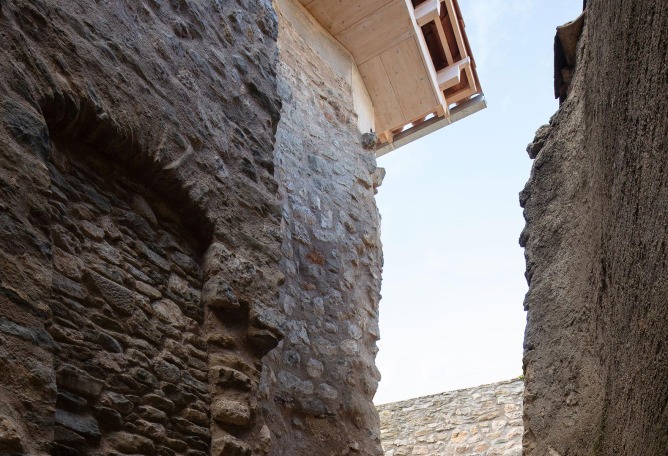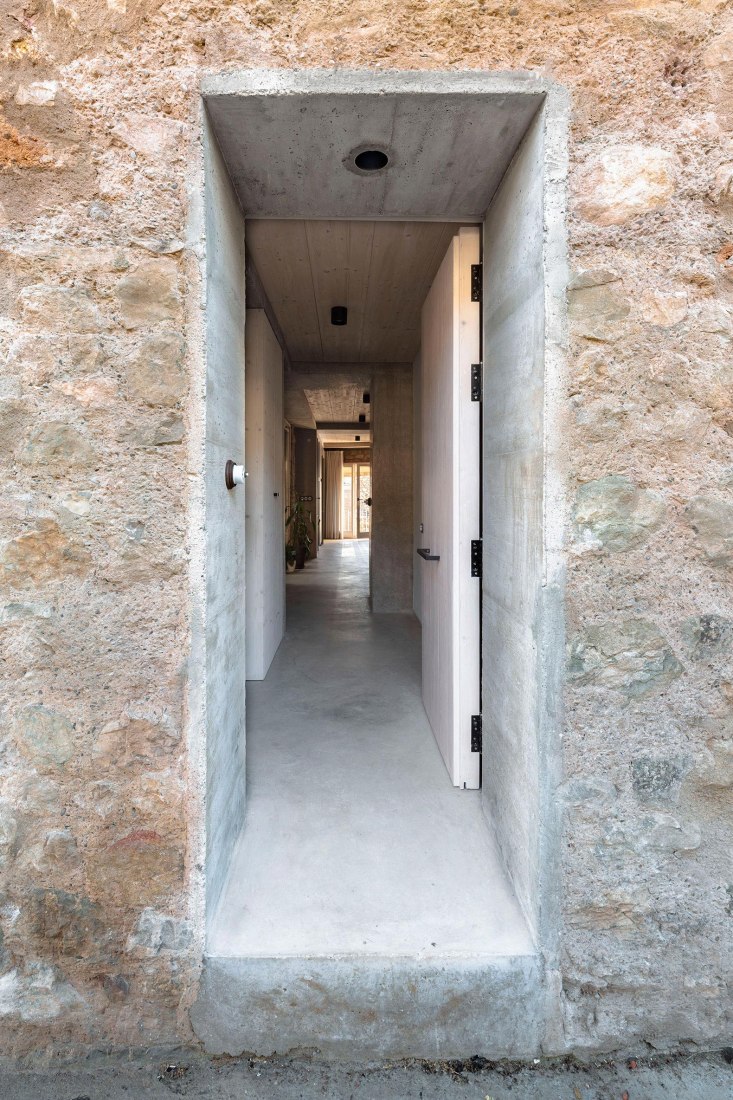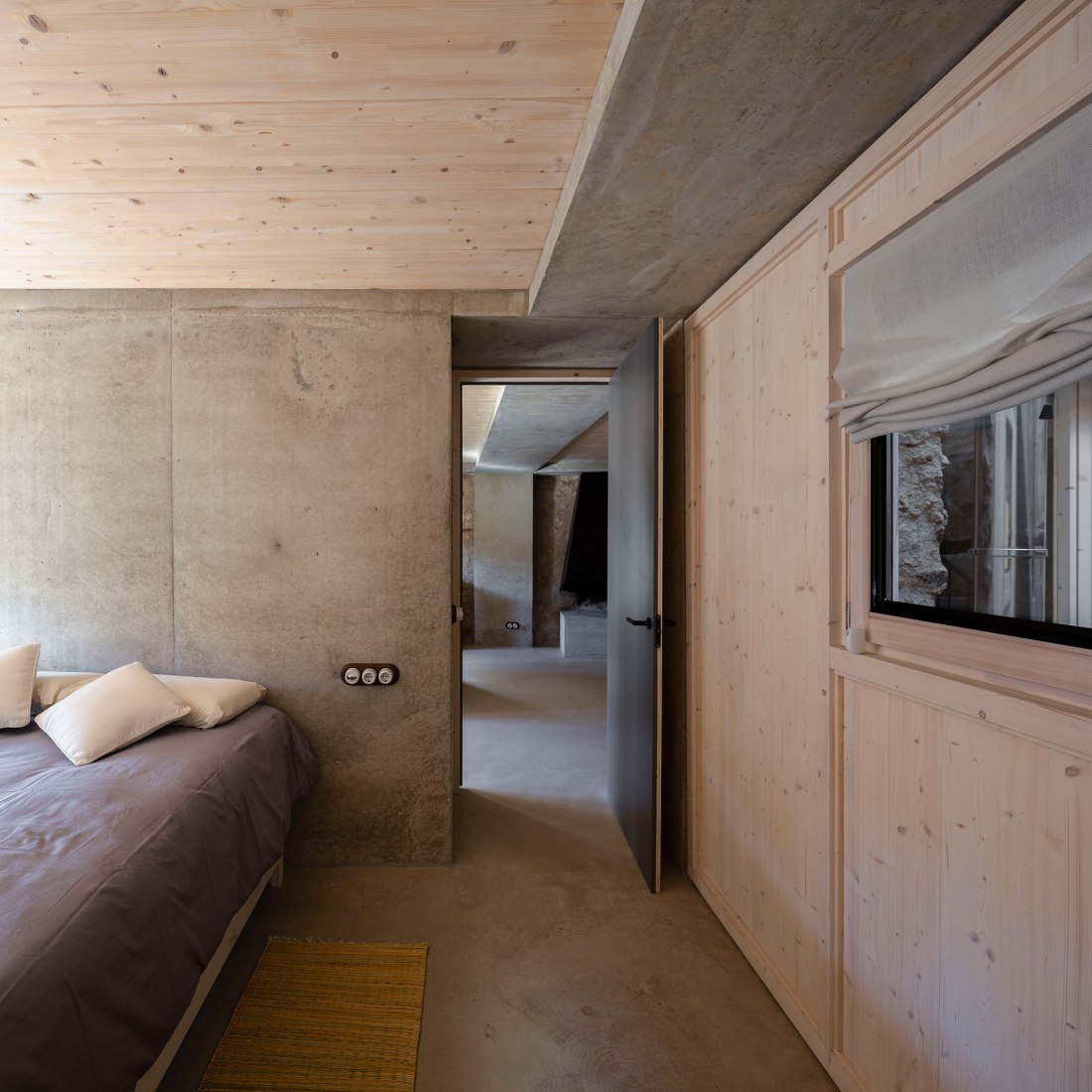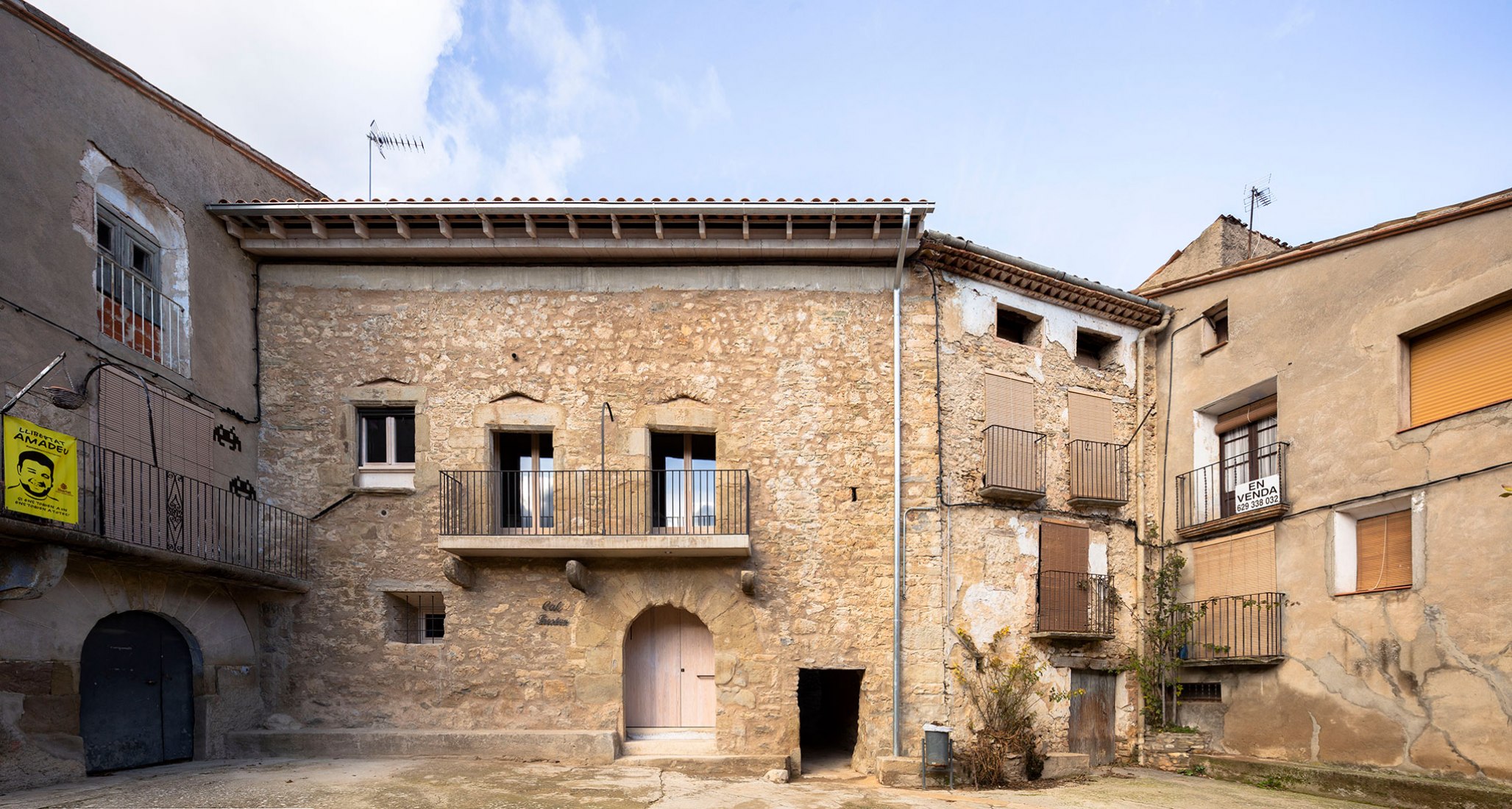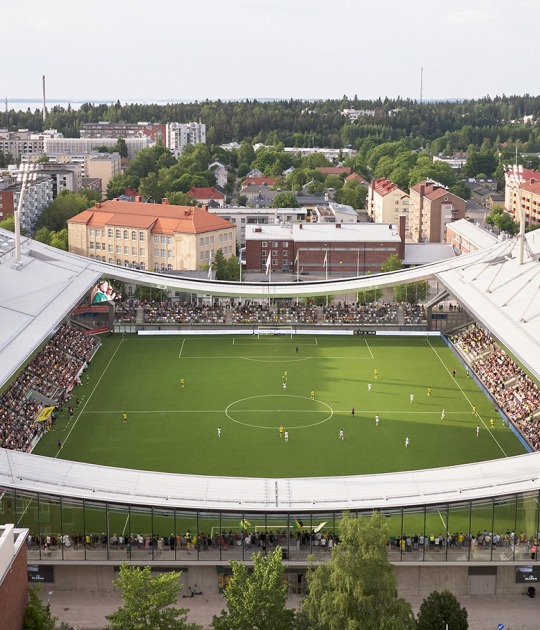The renovation developed by Arqbag proposes a lightened concrete structure with the ability to define the new interior spaces. This new structure is supported by the existing stone walls located in the basement, making them participate again as a structural element. In addition, the rehabilitation project proposes a new wooden roof supported on the existing walls.
This new roof is proposed as an element capable of providing new solutions to the needs of capturing light, lighting, and ventilating. Also, thanks to the possibilities of this new roof, it is possible to open a hole in it capable of illuminating a new vertical patio of three heights that illuminates and ventilates all the floors of the house, also working as a bioclimatic element, which in winter allows the passage of light staying closed and in summer it opens to take advantage of the fresh air from the basement.
Description of project by Arqbag
The original building dates from the end of the 15th century and is located in the fortified town square that was the origin of the town. Subsequently the passage through the building was made, which connects the square with the upper street. The existing building has a very unique heritage value, declared a Cultural Asset of Local Interest (BCIL).
We approached the project from an absolutely archaeological perspective and with a view to enhance the value of each and every one of the elements that constitute the pre-existence. We propose the addition of a minimal and simple structural system to supply the deficiencies of the preexistent building, in order to extend its life, reprogrammed as a single-family house. This system provides an answer both from the material efficiency and from the programmatic efficiency.
It consists of a lightweight reinforced concrete box that supports directly on the stone load-bearing walls of the basement, thus avoiding the need for a new foundation. These reinforced concrete nerves, in addition to defining the different spaces, link the 4 existing facades from the inside in such a way that they absorb the existing collapses, reducing the deformation of the walls by fixing them from their midpoint. Once the facades are supported by this box, the existing walls work together again structurally, also supporting the weight of the new roof.
To reduce the weight of the reinforced concrete of this box, we lightened the floor slabs by using a system of solid wood combined with reinforced concrete beams, built directly on site. The structural wood of this slab functions both as a lost formwork for the beams and as an interior visible finish. With the same criteria of load reduction, the roof is built with a wooden structure, supported on the existing walls.
Program: the structural reinforcement grid of the existing building articulates the disposition of the program through the structure-spaces.
Energy: we respected both the openings and the original composition of the facades, understanding that the element of opportunity to capture, illuminate and ventilate is the new roof. One of the 6 squares of the structural grid is empty, generating a large vertical three-level patio. This patio provides access to the three levels of the building, lighting for all the interior spaces, and natural ventilation for the basement, which has pathologies derived from the humidity of the ground. This patio is at the same time a bioclimatic mechanism; in winter it remains closed and provides lighting, while in summer it keeps open when it is desirable to take fresh air from the basement.
Heritage: reinforced concrete walls and beams support the facades of the heritage building from the inside, without the need to operate on the outside. The restoration of the original stone walls is carried out with lime mortar and a mixture of aggregates with specific local colors from two local quarries.


